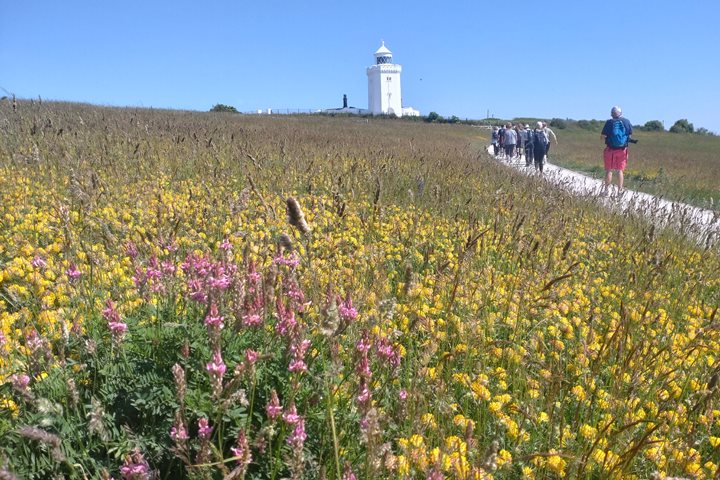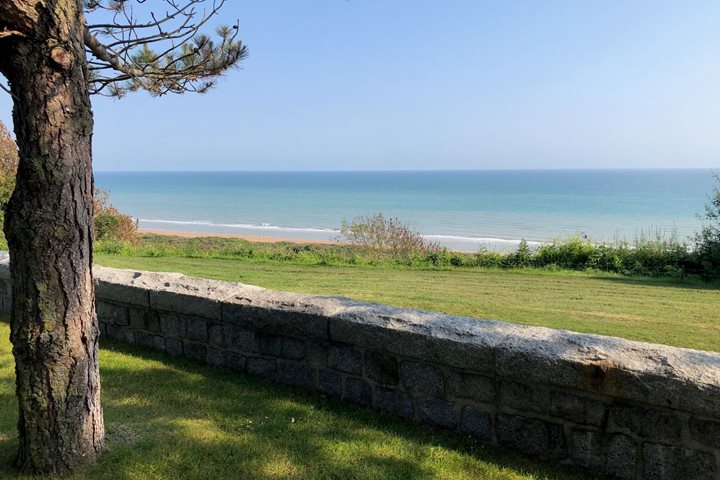The morning began with a scenic landing in the beautiful city of Antwerp, one of Europe’s biggest ports. The city’s medieval heritage struck us right away as groups embarked on the first of the day’s walking tours. The 13th century fortress of Het Steen greeted us off the ship. We continued over cobbled streets towards the historic centre. The Gothic tower of the Church of Our Lady was never out of sight as it towered over the rooflines. Morning tours took us to the imposing façade of the Central Station, constructed under King Leopold II, before we finished at the Plantin-Moretus Museum. Here, we were lucky enough to see a rare copy of the 36-line Gutenberg Bible from the 15th century. In the afternoon, we ventured once again into the heart of Antwerp. This time, the destination was the cathedral itself. The façade almost shimmered with Gothic stone carvings – it was difficult to tear our eyes away long enough to walk in the door! Inside, however, we were further captivated by three monumental panel paintings by Flemish Baroque master Peter Paul Rubens. Our guide gave us a quick, on-the-spot lecture on the history of painting to better demonstrate Rubens’ mastery of the medium. It goes without saying, the Baroque masterpieces alone would have been worth the trip to Antwerp! Back on the ship, we were treated to a beer tasting by beer sommelier Hans. After three healthy servings of beer with a delicious variety of flavours, the ship was a merry place to be on a sunny evening! Luckily, this merriment was to continue into the night as ethnomusicologist Jacob Edgar had arranged for the MANdolinMAN, a fabulously energetic mandolin quartet, to play on board. Spirits were high as we sailed out of Antwerp. We will not soon leave behind the impression left upon us by the diamond of Belgium’s coast.
- Daily Expedition Reports
- 11 Jun 2023
Antwerp, Belgium, 6/11/2023, National Geographic Explorer
- Aboard the National Geographic Explorer
- Europe & British Isles
Matthew Whyte, Historian
Born and raised in the south of Ireland, Matthew Whyte is an Art Historian specializing in the visual and cultural history of Italy from the thirteenth to the sixteenth century. He has lectured in University College Cork (UCC) since 2014, and his cur...
Read MoreShare Report
Related Reports
6/14/2023
Read
National Geographic Explorer
The Normandy Beaches
For many guests on the voyage, this was the day they were most anticipating. We spent the whole day visiting sites of the D-Day invasion and the 100-day Normandy battle. Expectations were high in our hearts and minds after a visit to the Caen Memorial yesterday and a very thorough introduction to the events (and their magnificent logistics) by Stephen Fisher. Our tour began with a drive through the peaceful countryside that is marked with verdant hedges – once a major obstacle for the Allied soldiers – to the great American Cemetery at Colleville-sur-Mer, which overlooks the Omaha beaches. It is hard to describe such a visit: ‘the countless white crosses stand mute in the sand,’ as the song has it. Cared for to perfection, the splendid park is a place of quiet and deep respect. Some guests went looking for a specific cross with a specific name. Others just walked over the lawn in silence. From there, we took a short drive through narrow, winding lanes to the beach itself. The tide was going out. Apart from two striking monuments, very little reminds visitors of the events that took place there. Nevertheless, simply looking up at the high range of dunes, which incoming troops had to overcome, is quite impressive. A new monument created by Anilor Banon stands on the beach: an array of striking, shining metal objects, like the leaves of giant plants, the monument is entitled Les Braves, or the Brave: ‘sons, husbands and fathers, who risked their lives and often sacrificed their lives in the hope of liberating the French.’ We had the chance to reflect and restore ourselves during lunch in the very pretty fishing town of Port-en-Bessin-Hupain. Soon, we moved to a new location, Pointe du Hoc. In the early morning of the landings, 225 Rangers climbed up the steep cliff and attacked what they believed was a formidable German battery of five 155 mm guns. They occupied the spot with heavy losses only to find that the guns had been removed just before the invasion. The Rangers held on; only 90 men were standing by the time they were relieved. In this peaceful, sunny place, we observed crumbling bunkers and deep pits everywhere, signs of a massive bombardment by the supporting fleet. Then we moved to Utah Beach, where we again spent a short time with the powerful monuments and the vast space above us – a sunny day, where the day of the invasion had been wet and cloudy. Half an hour farther inland is Ste Mère Eglise, a small town and the scene of a dramatic nightly landing by troops of the 82nd Airborne. Legend has it – and for a change, the legend is true – that one of the men, Steele, managed to get his parachute trapped on the spires of the parish church. He was shot at, wounded, and pretended to be dead before he was cut loose and made prisoner. In Ste Mère Eglise, signs of the Airborne raid are everywhere – in the brand new Airborne Museum, which some of us visited, in the numerous Army Surplus Stores around the town square, which have a lively trade in t-shirts and memorabilia, and even in the ‘Hair born’ barbershop. There was also room for some good French ice cream and a beer or two, but this was not a day that passed without emotion. And then, we covered the last stretch to Cherbourg, where National Geographic Explorer was alongside, ready to take us to Dover.
6/13/2023
Read
National Geographic Explorer
Normandy, France
Dawn rose over the Normandy coastline early, just as it did 79 years ago. Tracing a route used by the Allied task forces on June 6, 1944, National Geographic Explorer approached Ouistreham in the early morning. Talks by D-Day historian Stephen Fisher and art historian Matthew Whyte occupied the morning until we approached the locks of the Caen Canal. Once through, our great ship transited the narrow canal and soon reached Pegasus Bridge. The first objective of D-Day, the bridge was captured in the very early hours on the morning of 6 June by soldiers who landed by glider on the banks of the canal. On arrival at our berth in Caen, we were joined by the local band Mes Souliers Son Rouges (My Shoes Are Red), who treated us to a performance of folk music. After lunch, groups dispersed from the ship. One group visited the fabulous medieval city of Bayeux and spent time examining the famous Norman-era Bayeux Tapestry and the magnificent cathedral. The other groups toured sites associated with the Second World War. Visits to Sword Beach and Pegasus Bridge were followed by a trip to the Memorial Museum in Caen, where some guests were treated to a behind-the-scenes look at the museum’s significant archive and its collection of numerous and fascinating D-Day artifacts. An overnight stop in town gave guests the opportunity to stretch their legs in this lovely Norman city, whilst some rested in advance of a busy schedule tomorrow.







